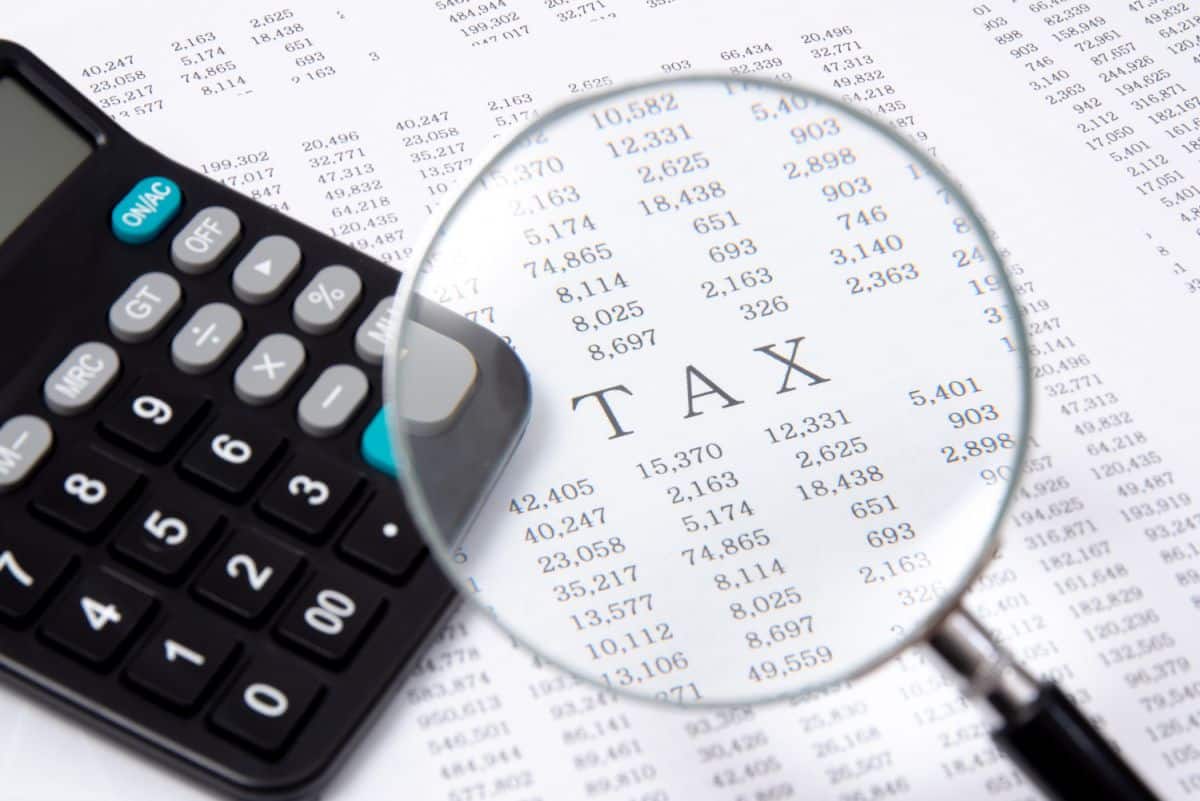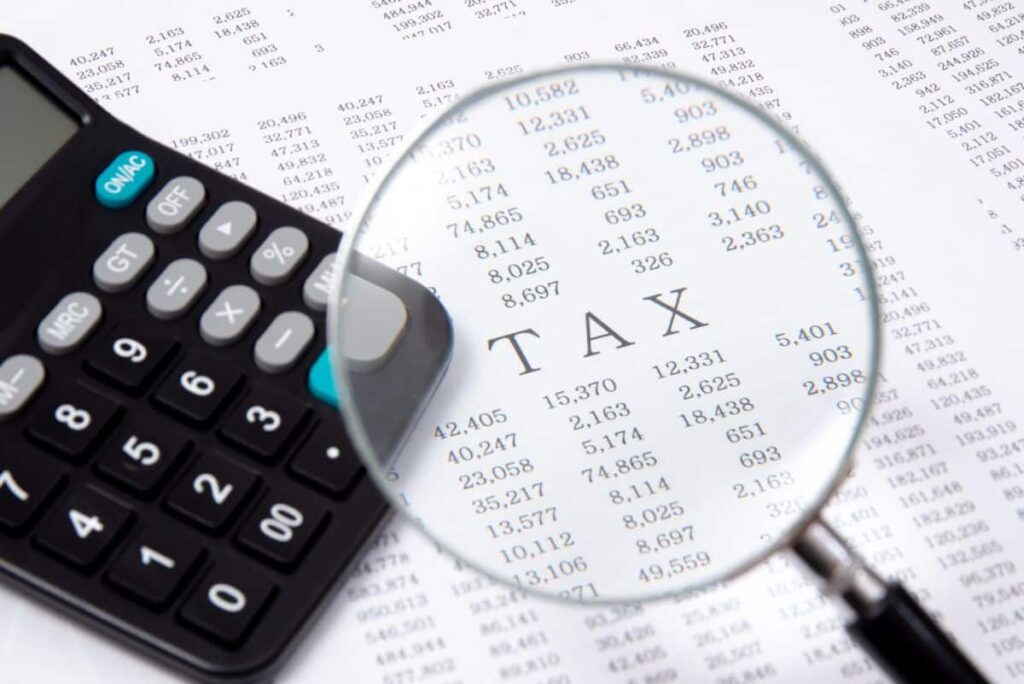Employees And Contractors – Taxation Tips
Even for individuals who deal with taxes on a regular basis, understanding tax law can be a difficult task. However, it is essential to get it correctly, particularly with regard to Employees and Contractors.
This is a two-part blog post; in the first part, we’ll look at the primary distinctions that need to be made between the two categories, and in the second part, we’ll offer some advice on how to ensure that you’re paying the appropriate amount of tax. If you are either an employer or a contractor yourself, it is imperative that you continue reading!
When it comes to taxes, just like there are regulations to follow for everything else in life, every single person is required to do so. The rules around taxation can be difficult to grasp, which can be a problem for both workers and independent contractors.
People have a lot of considerations to make when it comes to taxation because there are a lot of factors involved. When filing taxes, employees have to take into consideration a number of different aspects in order to do so accurately. In a similar vein, independent contractors are subject to their own unique norms and regulations regarding the filing process. The following are some suggestions that will assist in making the process simpler for all parties involved.
You are still required to pay taxes even if you perform your job duties from a remote location. Different tax obligations may come with different employment classifications, such as being an independent contractor or an employee. You may avoid getting in trouble with the Australian Taxation Office (ATO) and paying the correct amount of taxes by following these suggestions.
Do you understand the distinction between working as an employee and working as a contractor? It is essential to have a solid understanding of the differences in order to make the most effective financial choices for your company. The following are some suggestions for how workers should be classified, as well as the tax ramifications of doing so.
Whether you are an employee or a contractor, there are certain tax regulations that you need to be aware of and follow. This article will provide you with some suggestions that will help you ensure that you are in compliance with the law and that you pay the appropriate amount of taxes. Remember that these are just some general pointers, so if you need more detailed information, you should go to someone who specializes in taxes.
There is typically a great deal of confusion over who is responsible for paying what and when it comes to the payment of taxes. This is especially important to keep in mind with regard to workers and independent contractors. In the next post, we will offer some advice on the proper way to handle the taxation of both employees and independent contractors.
In addition to that, we are going to offer some knowledge regarding typical tax blunders that people make in this particular sector. If you have a firm grasp of these ideas, you can be confident that you are handling the taxation of your employees and contractors in the most effective manner.
Did you realize that there is a significant gap between the way taxes are withheld from employees and those paid by contractors? Contractors are responsible for completing an annual return and paying taxes on their entire income for the year, whereas employees’ income taxes are automatically withdrawn from their paychecks on a monthly basis as part of the payroll process.
Taxpayers who are confused about which category best describes them may find this information to be confusing. Therefore, let’s take a more in-depth look at the key distinctions between employees and contractors, as well as the best practices for staying on top of your tax responsibilities.
In most cases, those who work for you either full-time or regularly are regarded to be employees. On the other hand, independent contractors are typically defined as workers who are hired for certain jobs or projects.
It is essential to have a solid understanding of the distinctions between employee and contractor payments because each has its own set of tax repercussions. Continue reading for more information about how to properly handle the payments to employees and contractors.
Whether you are an independent contractor who is paid by someone else or an employee who works for someone else, there are several tax considerations that you should keep in mind.
This blog post will cover the distinctions between employees and independent contractors, as well as provide some advice on how to reduce the amount of money you have to pay in taxes. Continue reading therefore if you are either just starting out in the working world or are hoping to reduce the amount of money you owe in taxes.
Let’s get started!
Determine whether or not your type of company is required to file a certain type of tax return

Even if you have a loss to report or if your revenue is below the threshold, you are still required to file a tax return for your company. Make sure you are familiar with the regulations that pertain to the structure of your company before you file your return:
- Sole trader – File a return of individual income tax. Include all of the income from your business on your tax return using a separate business schedule. There is no requirement for you to file a separate tax return on behalf of your company.
- Your partnership has its own tax file number (TFN), but it is exempt from paying income tax on any profits it generates. This is known as a partnership. Instead, the revenue from the partnership is reported on the individual tax returns of each participant in the partnership. In addition to that, your partnership is required to file a separate partnership return using its TFN.
- A separate and distinct legal entity is referred to as a company. You are required to file a tax return for the company and pay tax based on the company’s income. If you are a director, you will still be responsible for filing your own individual tax return.
- Trusts are required to file their own separate income tax returns and are issued their own TFNs.
It’s possible that you could qualify for tax breaks if you run a nonprofit organization (also known as an NFP). On the website of the Australian Taxation Office (ATO), you can access an external site that provides an overview of tax reductions for non-profit organizations.
Determine the time by which you have to check-in
Tax returns are due by the 31st of October for the following if they are not filed through a registered tax agent:
- solo traders;
- partnerships;
- trusts.
The 28th of February is the typical deadline for self-preparers to submit their company returns. If you submit your return through a registered tax agent or an external site, the person handling your submission will let you know when they will submit your tax return.
There are a variety of due dates for the BAS; they might be monthly or quarterly.
When it comes to taxes, do you classify yourself as a resident?
The criteria that are used for determining a person’s residency status for tax purposes are not the same as those that are considered when determining residency status for other purposes, such as immigration. The guidelines can be difficult to follow, however, the ATO offers information on tax residency in order to provide assistance. In addition, there are regulations in place for people who are dual residents, working holidaymakers, or overseas students.
The Australian Taxation Office (ATO) has issued guidance to the effect that individuals who are in Australia temporarily for some weeks or months will not become an Australian residents for the purposes of taxation, as long as they usually live overseas permanently and intend to return there as soon as they are able to do so. This guidance pertains to non-residents who are in Australia temporarily as a result of COVID-19.
Your tax duties in Australia will not alter if you are an Australian tax resident who is temporarily living and working outside of the country as a result of COVID-19. If you are required to pay income tax in another country, you may be eligible for a foreign income tax offset, which will lower the amount of tax that you owe to the Australian government.
Are You Running a Company?
For monetary and other reasons, it is essential to have a solid understanding of the distinctions that exist between a pastime and a business. There is no straightforward explanation, and in some cases, what begins as a pastime might develop into something more significant over time.
Considerations to make include whether or not you aim to turn a profit, carry out activities in a manner consistent with a business, or repeat activities with a similar format. In addition, the Australian Taxation Office (ATO) offers information on home-based businesses, internet sales, and share trading, and the tool at business.gov.au is available for you to try.
A business that is little more than a hobby or a lifestyle choice cannot legitimately be written off as a financial loss. Even if it is unlikely to ever turn a profit, has business-like qualities, and doesn’t have a significant commercial purpose or character, you cannot deduct the loss from any other income you have. This is the case even if it is unlikely to ever generate a profit. You may, however, defer the loss until such time as the business begins to generate a profit.
Deductions on taxes for people who work from home
PCG 2020/3 Claiming deductions for additional running expenditures incurred whilst working from home due to COVID 19 is applicable for employees and business owners in the preparation of their tax returns for the financial year ending 30 June 2020 and beyond. This guideline generally gives a “shortcut rate” to calculate additional running expenses for the duration of working from home.
When estimating additional operating expenses when working from home, the shortcut rate can be used as an alternative to the present fixed rate as well as actual techniques.
The taxpayer has the ability to claim a tax deduction at the reduced rate of 80 cents* per hour for each and every hour that was worked at home. The hourly rate accounts for all of the additional operating expenses, including the following:
- Expenses associated with gas (for heating) and electricity (for lighting, cooling/heating, and electronic devices utilized for work, such as a computer);
- The reduction in the value of capital things, such as home office equipment and furnishings, and the cost of repairing those items;
- Costs associated with cleaning;
- Expenses related to using a telephone, including the decrease in value of a handset;
- Internet expenditures;
- Computer consumables;
- Stationery;
- The decrease in value of an electronic item such as a computer, laptop, or other devices.
Taxpayers who use the simplified rate to claim a deduction for their additional operating expenditures are not eligible to claim any further deductions for any of their expenses (listed above).
The advice provided by the ATO is applicable to employees and owners of businesses beginning on March 1, 2020, and who meet the following criteria:
- Working from home in order to carry out the responsibilities of their employment or to manage their business (working from home) throughout the time period beginning on March 1, 2020, and ending on September 30, 2020;
- Working from home resulted in increased operating expenses, all of which are deductible according to the general deductibility provisions (section 8-1 of the Income Tax Assessment Act 1997) and the depreciation allowance provisions (Division 40 of the Income Tax Assessment Act 1997), respectively.
In order to prove their eligibility for the reduced rate of compensation (80 cents) under the shortcut approach, both employees and business owners will be required to keep a log of the number of hours they spent working from home. In addition, the “COVID-hourly rate” will be a new disclosure item that will be included for the deduction for home office expenses on tax returns for the years 2019-20 and 2020-21.
1. Expenses You Cannot Claim
To begin, before you begin working from home for an employer, there are certain costs that you will not be able to deduct from your income.
Office refreshments
The majority of us do it first thing in the morning when we go to the office and fetch a cup of coffee from the break room. Many people believe that if they did not have their coffee in the morning, they would not be able to perform their jobs as well or productively. The Australian Taxation Office (ATO) does not permit employees who work from home to claim deductions for refreshments like coffee, tea, or milk, regardless of whether or not the aforementioned statement is accurate.
Expenses that are reimbursed
You are not able to deduct any costs that were reimbursed to you by your employer. You are not permitted to make a claim for expenses like these, for instance, if you have a contract with your employer that stipulates they will pay for your mobile or home internet fees if you work from home.
Expenses incurred for child care and homeschooling of children
It is likely that parents have had a nightmarish experience attempting to concentrate as their children run amok in the house. However, there is no tax deduction available for the costs associated with daycare or home schooling of children.
Occupancy expenses
And third, in most cases, employees are not permitted to deduct the expenditures associated with working from home while still claiming occupancy expenses. These expenses consist of things like rent, the repayment of a mortgage, water, council charges, and body corporate costs.
2. Expenses You Can Claim
You may be able to deduct some of the costs associated with maintaining your home office if you are self-employed and operate from home. These costs include the following items:
- a supply of electricity and gas for the purpose of heating, ventilating, and lighting your home office;
- Expenses related to the wear and tear of machinery (such as desktops, laptops, and tablets);
- the value of furniture (such as desks and chairs) that has decreased;
- The costs of the telephone;
- Internet service fees;
- Stationery, as well as consumable office supplies like printer paper and ink.
3. Expense Calculation Method
There are three different approaches to calculating the costs of running a home office. Methods such as this include the fixed-rate technique, the shortcut method, and the true cost method.
Method That Cuts Corners
The Australian Taxation Office (ATO) has recently created a new approach called the Shortcut method to simplify the process of computing your deductions for working from home. This was done in response to the fact that the majority of the workforce in Australia now works from home.
This approach is only accessible for a limited time, from March 1, 2020, through June 30, 2020.
A flat rate of eighty cents per hour can be claimed by employees using this method for each hour that they work from home throughout the relevant time period. This will take care of any expenses that you can claim as outlined in the previous section.
You will not be needed to retain a record of any receipts if you choose to proceed with this technique. On the other hand, you will be responsible for keeping track of the total number of hours that you have spent working from home. This might be a timesheet, roster, diary, or something else along those lines.
Before March 1st, employees who work from home are required to choose between using the Fixed Rate Method or the Actual Cost Method.
Method Based on a Fixed Rate
The Fixed Rate Method is quite similar to the Shortcut Method in that it allows employees to claim a set rate, in this case, 52 cents per hour, for each hour that they work from home. However, you can utilize this strategy for the entirety of the year.
Only the cost of energy and gas, the depreciation of furniture, and the cost of repairs to your home office equipment and furnishings are covered by the 52 cents per hour rate.
The 52-cent rate does not cover telephone, internet, consumables, or equipment depreciation. You are allowed to make a separate claim for the fraction of these costs that is relevant to work; nevertheless, you are required to keep track of the receipts.
Employees who use this approach are required to keep a record of the total number of hours they have put in while working from home. Alternately, you may keep a journal for four weeks to document their typical routine when working from home, and then use that routine as a template for the rest of the year.
In addition, in order for employees to utilize this strategy, they are required to have a designated work location, such as a study or work desk. On the other hand, locations that are shared by multiple people, such as a kitchen island or the dining table, are not considered dedicated work areas.
The Method of Actual Costs
Last but not least, if you use the Actual Cost Method, you will be able to deduct the actual amount of money that was spent on work-related costs when working from home.
In most cases, the percentage of your home’s total square footage devoted to work is determined by dividing the overall floor space of your home by the total square footage of your dedicated work area. This fraction is multiplied by the overall costs that were incurred for the time in question.
You are free to employ whichever method or methods will give you the greatest result as long as you satisfy the eligibility and record-keeping criteria that are associated with each approach.
In order to ensure that you get the most out of your tax deductions for the current Financial Year, you should get in touch with your tax professional as soon as possible so that they can determine the deduction that is most applicable to your situation. If you still have questions after reading the information presented above, kindly consult your advisor as soon as possible.
Tax Advice for the Five Largest Job Industries
Now that tax season has begun, it is a good moment to take stock of all the money you’ve spent on work-related products throughout the previous year. The question is, have you requested everything to which you are legally entitled?
As a general rule, you have the right to file a claim if you have to pay for something related to your job but your employer does not pay for it or reimburse you for it. On the other hand, this can result in deductions you weren’t expecting at all, depending on what you do for a profession. Here are some of the things that you may not know you may claim for five of the most common occupations, as well as some of the things that you cannot claim for those professions.
1. Medical and social assistance services
- The expense of purchasing a uniform that you are required to wear as part of your job responsibilities is tax-deductible.
- You can deduct the cost of clothing that you wear at work to protect your regular clothes from becoming soiled or damaged, such as laboratory coats and aprons. This is another item that qualifies for this deduction.
- You can deduct the cost of protective apparel, such as shoes with non-slip shs if you need it.
- Submit your claim for the conference costs. Even if the conference is held in another country, participants may be expected to pay for their own transport, meals, and lodging in addition to the conference fee. On the other hand, you could need to divide up the costs (and disregard the private portion) if you ended up spending some time relaxing on the beach after the event.
- Submit a claim for professional subscriptions, such as those to a labour union or a professional organization such as the AMA.
- You have the right to submit a claim for the money you spend on food if your employer does not provide you with a meal allowance and you are compelled to work overtime.
- Expenses incurred by using an agency to find a job are eligible for reimbursement under certain circumstances.
- As part of their jobs, many people who work in health care will have to drive their own vehicles. This can include transferring patients, travelling between the residences of patients, or travelling from one medical facility to another; all of these types of excursions have the potential to be claimable.
2. Retail workers

- If you have a job that requires you to wear a uniform, the money you spend on it is tax-deductible. If, on the other hand, you dress in a more normal manner, then the expense is not tax-deductible. Some retail workers at fashion stores, for instance, are required to wear apparel purchased from the business or brand for which they work in order to keep their jobs. However, because those clothes are still considered to be standard attire, there is no deduction that may be taken for them.
- If you spend time working from home – for example, preparing staff rosters over the weekend for the following week – you are eligible to claim a portion of the costs associated with maintaining your home. This can be done either on the basis of actual costs (in which case you will need receipts) or at a standard rate of 45 cents per hour.
- You are eligible to receive a deduction for the money you spent on any work-related classes. This might involve training in occupational health and safety or first aid, as well as training in management or job-related subjects, such as a Cert III in retail.
- If your job requires you to travel between different stores, you may be eligible to receive reimbursement for the costs of travel between different work locations. This could include any time you spend working temporarily from a different shop to your regular employment (say providing holiday cover), as well as any journeys you take between stores to transport products. Additionally, this could include any time you spend travelling.
3. Workers in the professional and administrative fields
- If you need a purse or briefcase for work-related activities, such as carrying files or a laptop, you can deduct the cost of buying it from your taxable income. Caution is advised, though, because the ATO may question whether or not a Gucci handbag is essential for the job you have.
- The cost of “standard” apparel that is worn at work cannot be deducted from taxable income. Unfortunately, this eliminates the possibility of wearing suits and other forms of office attire. However, apparel that is customary for the practice of law, such as the wigs and robes that barristers wear in court, qualifies as a deductible business expense.
- It is possible to apply for an annual practising certificate for certain professionals, such as lawyers.
- If you work from home (for example, on the weekends or in the evenings), you are eligible to take a tax deduction for expenses related to your home office. You can either claim 45 cents per hour, or you can claim a percentage of your actual costs, based on a diary that you keep of how your time is spent at work.
- If your job requires you to travel, you may be able to deduct some or all of the expenditures associated with those trips, including those associated with visiting clients or suppliers. You have the option of claiming 66 cents per kilometre, up to a maximum of 5,000 kilometres, or keeping a logbook and claiming your real expenses if you use your automobile. If you don’t use your car, you may be eligible for reimbursement for parking fees, tolls, and even public transportation costs.
- It is not possible to deduct the money spent on entertaining customers.
- Even if you utilize your membership as a way to network and meet clients, you will not be able to deduct the expense of club fees (such as those for a local golf or tennis club), which is unfortunate.
- Costs associated with your professional liability insurance may be reimbursable.
4. Educators and people in training positions
- The yearly registration costs paid by teachers are tax-deductible.
- Make sure you get reimbursed for any money spent on teaching-related reference books or professional libraries.
- The prizes that you buy to recognize the efforts of your students and to motivate them to do better in the future are eligible for reimbursement.
- Stationery, art supplies, stopwatches, and computer consumables such as pens and toner cartridges are all deductible expenses. Also deductible is charitable contributions.
- desktops, laptops, tablets, mobile phones, and printers that cost more than $300 in total (items costing less than $300 may be written off immediately). depreciation on equipment that is less than $300 in total cost.
- Help for the instructor
- You are allowed to make a claim for the costs connected with attending conferences and courses that are related to your teaching, including travel and textbook expenses.
- Imagine that while at home you are responsible for marking assignments or preparing classes. In such a situation, you are eligible to claim home office expenses such as a percentage of the costs involved with using any technology, including computers, printers, and the internet, as well as a share of the costs associated with the utilities you use in your house.
- The costs of school excursions, such as sporting or camping trips, that you pay for out of pocket and aren’t paid for are eligible for reimbursement if you file a claim. This can cover the expense of lodging, as well as meals and transportation.
5. Those Who Work in Construction and Manufacturing
- If your job requires you to purchase tools or other work-related equipment, you are eligible to deduct the cost of those items from your taxes. In addition, you are eligible to make an immediate claim for a deduction on any tools that cost up to three hundred dollars. Anything that costs more than that needs to be written off as an investment over the course of the tool’s useful life.
- You can deduct from your taxable income the cost of insuring your tools as well as the interest you paid on any financing you took out to purchase your tools and equipment.
- If your employer requires you to wear a uniform and that uniform bears the company logo, you may be eligible for a tax deduction for the money you spend purchasing and maintaining that outfit. Items of clothing that are considered “ordinary,” such as a simple khaki shirt, that a person may wear to another job or outside of work are not acceptable. A khaki shirt with your employer’s name printed on it would meet the requirements. It is possible to submit a claim for reimbursement of the money spent on protective gear like helmets, ear muffs, safety goggles, sunglasses, sun caps, and sunscreen.
- The cost of paying dues to a trade union is deductible.
- The fees associated with the renewal of any professional licenses, registrations, or subscriptions can be deducted from your taxes.
- the price of continuing education classes that you take at a university or TAFE (such as an apprenticeship program at a technical college), provided that the class is relevant to the work that you are doing at the moment.
- If you have been given a real overtime meal allowance in accordance with industrial legislation, award, or agreement, you are eligible to make a claim for meal expenditures related to overtime work up to the amount that you have spent.
6. And to conclude:
Maintain your books! It makes no difference how much you’ve put out; if you can’t provide evidence that you did, you won’t be able to get it back. Consequently, compile a complete set of the respective receipts and bills. If you have misplaced your receipt, the shop should be able to provide you with a replacement. If it doesn’t work, if you can find the item on your bank or credit card statement, that might do the trick.
If you don’t have the proper documentation, you shouldn’t make a claim since you’ll be inviting an audit from the ATO. Consultation with a tax agent is highly recommended if you want to guarantee that your tax return is accurate and that you are making the most of the deductions to which you are entitled. The best part is that if you receive assistance from a tax agent to file your return, the cost of doing so is deductible from your taxes.


















